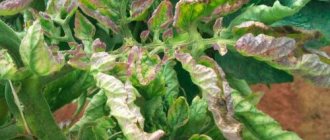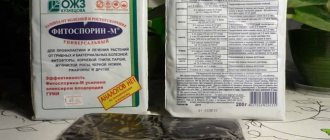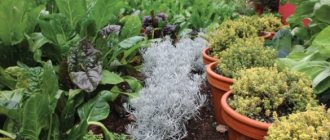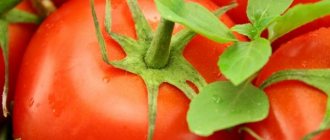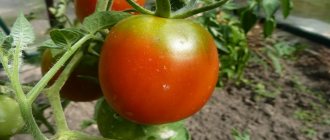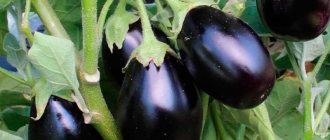How to grow tomatoes in a greenhouse? Tomatoes are a favorite vegetable in our country. Their popularity can only be compared with potatoes or onions. And this is easy to explain: in addition to high taste, tomato fruits contain a lot of useful substances, among which lycopene is especially worth highlighting. This is a natural antioxidant that fights cell aging and accelerates the intensity of their renewal. This unique microelement reduces the number of mutated cells that can give rise to the growth of cancer.
It is not surprising that people actively grow tomatoes from southern to northern latitudes. But in open ground this healthy vegetable does not grow everywhere. Therefore, in colder climates, tomatoes are grown in greenhouses. How to grow tomatoes in a greenhouse, how to care for them, our article will help you answer these questions.
How to grow tomatoes: step-by-step instructions
Seed selection and preparation
There are a huge number of varieties and hybrids of tomato seeds on the market. The first thing you should pay attention to when selecting seeds for sowing in a greenhouse is the self-pollinating nature of the varieties. To avoid mistakes, give preference to F1 hybrids. As for other characteristics - ripening time, resistance to diseases and pests, color, size and taste - here everyone chooses what suits him best.
Seeds can be divided into two large groups granular (coated with a shell consisting of a starting set of nutrients) and regular, unprocessed. The first type does not require soaking and is suitable for spot sowing, but requires a regular level of soil moisture for germination. The second ones are smaller in size, germinate faster, they can be soaked before sowing, or treated with fungicides.
Sowing tomato seeds
How to grow tomatoes in a greenhouse. You should start by growing seedlings. tomatoes. Thus, the strongest seedlings are selected for cultivation in the greenhouse.
- The soil should be loose, soft and light, with good drainage and aeration. Before sowing, it is necessary to prepare peculiar beds-furrows 1.5 cm deep, which are then thoroughly watered. Then, in increments of 0.8 - 1 cm, seeds are placed in them. After that, the crops are sprinkled with soil mixture and using a fine sprayer (so as not to knock the seeds out of the bed with a strong stream), the crops are moistened.
- To make seedlings appear faster, it is recommended to cover the crops with film. It helps maintain constant temperature and humidity in the greenhouse with seedlings.
- After the first shoots appear, it is important to carefully ensure that the soil does not dry out. At the same time, from time to time it is necessary to ventilate the greenhouse with seedlings in order to avoid the appearance of mold on the surface of the soil. It is best to do this after watering, so that the tomato leaves do not lose their tightness due to changes in humidity and temperature.
- When the tomatoes reach a height of 20 - 25 cm, they should be planted - that is, transplanted with wider steps to a permanent habitat in the greenhouse. When pruning, you need to make sure that one bush does not interfere with the development of another. On average, the distance between them should be at least 40 cm. This will allow both the root system and the above-ground part to actively develop.
- After transplanting the seedlings, it is watered; the next day after watering, the root areas need to be loosened, which will improve air exchange.
READ DETAILED INSTRUCTIONS - HOW TO GROW TOMATO SEEDLINGS AT HOME - HERE
What varieties of tomatoes to choose for growing in a greenhouse
Both determinate (low-growing) and indeterminate varieties of tomatoes are grown in the greenhouse. Which bear fruit until frost.
Among the first, it is worth highlighting Openwork, Bourgeois, Spring of the North.
Among the tall, powerful tomatoes we can distinguish Octopus, Major, and Happiness.
Such hybrids as DJ, Kirzhach, Drive, Super Red, PinkMagic, Tolstoy, Malvaria, Three Sisters, Blue Bunch are particularly resistant to diseases and have good fruiting.
How to grow tomato seedlings at home
At home, tomato seedlings should be sown in special seedling boxes. Expanded clay is placed at the bottom, serving as drainage and protecting the root system from excess liquid. Then the box is filled with soil, which needs to be watered with warm water. To make it easier to plant in rows, you need to mark grooves 1.5 cm deep. Seeds are placed in these grooves, then they are sprinkled with dry soil mixture and gently sprayed with water (you can use a spray bottle).
At the end of sowing, the boxes are covered with film and placed in a warm place, protected from drafts. After the emergence of seedlings, you can begin to gradually open the greenhouse slightly - hardening off the plants in order to gradually accustom them to their normal habitat.
After the appearance of two to three true leaves, the seedlings are picked, transplanted into individual pots or boxes, but with large steps.
Method for picking tomato seedlings into a snail
Another great way to pick: in snails. And it doesn’t matter whether it’s picking peppers, picking eggplants or picking tomatoes. This picking method is universal. This method is very space-saving and is especially suitable for those who have a lot of seedlings. The root system of the plants is not injured, and the seedlings grow strong and healthy.
The best varieties of tomatoes for growing in a greenhouse
The result directly depends on the choice of variety. There are types of tomatoes intended for growing in greenhouse areas. They give a guaranteed harvest in closed ground conditions. Some varieties are considered universal; they are equally successfully grown in open beds and in greenhouses. The main difference between varieties that must be taken into account when choosing a variety relates to the type of bush:
- Indeterminate plants give a good harvest due to the ability to tie 6-7 clusters to the trellis. If such varieties are not formed, they will create greater thickening. They are considered priority species for polycarbonate greenhouses due to earlier ripening and duration of fruiting.
- Determinate ones are limited in growth. But when the bushes develop, there will be enough light and air in the greenhouse area.
Many vegetable growers prefer mixed plantings for indoor soil. They believe that planting determinate varieties along the walls allows for more efficient use of greenhouse space. It is best to buy hybrid seeds for indoor soil.
On the modern market there is a sufficient selection of tomato varieties for greenhouse cultivation. It is better for beginners to start with time-tested types; experienced professionals can experiment a lot. Among the noteworthy varieties it is worth noting:
- Southern tan. A variety of yellow tomatoes with an original fruit shape. The large-fruited tall species (indeterminate) is suitable for greenhouse cultivation and in open beds. Medium ripening period, excellent taste. It produces greater yields in greenhouses, as it requires heat.
- Honey Spas. Salad indeterminate variety of yellow tomatoes. The large, heart-shaped fruits ripen 110 days after planting. It requires the formation of a bush of 2-3 stems per 1 square meter. m of polycarbonate greenhouse area no more than 4-5 bushes are placed.
- Eleanor. Determinate red-fruited tomato of mid-season variety. The fruits are small and are used fresh or canned. It prefers warmth, so it bears fruit well in closed ground conditions.
- Cardinal is an elegant raspberry-pink variety of tomatoes for a polycarbonate greenhouse. Indeterminate, mid-early, very tasty. Formed into 1-2 stems, the bushes need a garter. Productive - up to 14 kg per 1 sq. m, disease resistant.
Many vegetable growers prefer small-fruited cherry tomato varieties. They are planted in the same area with high indeterminate varieties. Suitable for a polycarbonate greenhouse:
- Bonsai. Determinate variety, bush height is about 50 cm. It forms independently as a standard. The taste of the tomato is excellent, the weight of the fruit does not exceed 30 g. 1 kg of fruit is collected from one plant.
- Minibel. The fruits are small, but very tasty. Bushes are decorative and productive. Plant height is about 40 cm, ripening period is 90 days.
Of course, dwarf varieties are not a priority, but in a greenhouse they give a good harvest and serve as a worthy decoration.
In addition to the listed varieties, the hybrids “Bourgeois”, “Sprut”, “Azhur”, and “Major” are very popular. The alphanumeric index F1 guarantees good fruiting and disease resistance. Self-pollinating hybrids do not require artificial pollination. This is an ideal option for a polycarbonate greenhouse.
How to prepare a greenhouse in spring
Preparing a greenhouse before the spring-summer season consists of several stages:
- Cleaning - everything that remains from the fall is removed, including old pegs, ropes, and remnants of vegetation. The greenhouse covering is washed with a soap solution to remove dust and dirt, which may contain pathogens.
- Disinfection - to destroy sources of diseases and pests in the greenhouse, you can use a sulfur bomb, and treat the soil with a solution of fungicides, for example Fitosporin-M.
How to plant tomatoes correctly
When planting a tomato, every step is important, from calculating the planting distance to the number of plants in the greenhouse and planting depth.
At what distance
Tomatoes must be planted according to the scheme. There should be a gap of 30-75 centimeters between plants. The distance directly depends on the varietal characteristics of the selected variety.
In a greenhouse measuring 3x6 meters, 2 or 3 beds are prepared. When placing two beds, they are laid out near the walls of the greenhouse. Their width does not exceed 100 centimeters. When planting seedlings, two-line or square-bush planting is used. The bushes are placed in a checkerboard pattern. With this planting, about 60 bushes are planted.
When placing three beds, the outer ones are placed near the walls and have a width of 60 centimeters. The average bed is 100 centimeters and it is double. Row spacing is 40 centimeters.
The height of the beds should be 30-40 centimeters above ground level. Their width should be 60-90 centimeters, and the row spacing should be 60-70 centimeters.
Seedlings are placed in rows or in a checkerboard pattern (depending on the height of adult bushes). Low-growing varieties are planted at a distance of 30-40 centimeters, tall ones - 60-75 centimeters from each other.
Low, ultra-early and early-ripening varieties are planted in a checkerboard pattern. The rows are doubled with a distance of 50 centimeters, the plants are formed into 2 or 3 stems. The gap between the bushes is 40 centimeters.
Standard and determinate varieties are planted with an interval of 48-50 centimeters, between bushes - 30 centimeters.
Tall varieties are placed in a checkerboard pattern in increments of 70-75 centimeters, and the gap between the bushes should be 60 centimeters (if the bush is formed into 1 stem) or 75 centimeters (if it has 2 stems).
How many pieces are there in the greenhouse?
Various varieties and hybrids with different maturation rates can be planted in rows.
When planting tall varieties, 60 plants are placed in a greenhouse measuring 3x6 meters. On each side there is a bed, the width of which is 100 centimeters.
When planting medium-sized varieties in a greenhouse, 80-90 bushes are planted. If the size of the greenhouse is 3x8 meters, the number of plants increases by 40 tomatoes.
180-200 low-growing bushes are planted in the greenhouse (2 plants together). The gap between plants is 30 centimeters.
When planting different varieties, tall plants are planted closer to the wall, and early ripening ones are placed near the aisle. After the harvest ripens, early-ripening varieties are completely removed from the greenhouse, which promotes the growth of tall, later varieties.
Mid-ripening and late low-ripening tomatoes are placed near the walls of the greenhouse, and tall ones in the second row, next to the aisle. This way, tall bushes will not block the light from shorter tomatoes.
Landing
It is not recommended to plant tomato seedlings in the same greenhouse every year. At the same time, they begin to get sick, and the yield decreases.
If there is little space and it is not possible to replace the crop to restore the fertility and health of the soil, in the fall, after removing plant residues, the soil is cut to a depth of 10 centimeters. The cut soil is removed. The soil is spilled with a solution of copper sulfate (25 grams per 10 liters of water). A new fertile layer of soil is added on top (turf, sand, peat, rotted humus, wood ash, sawdust).
Loam is mixed with sawdust and humus (10 kilograms per square meter). Sand is added to the chernozem (1:1). Peat soil is mixed with turf, humus, sawdust, sand (5 kilograms per meter). Ash is mixed into any soil.
Evenly distributed soil is spilled with vitriol or potassium permanganate.
If there is no possibility of replacing the soil, cereals or legumes are sown in the beds. After they grow, they are mowed and the soil with them is dug up. Over the winter they will have time to decompose, saturating the earth with useful substances.
Tomatoes need to be planted in warm soil. The temperature of the earth should be 15 degrees. At lower temperatures, it is better to postpone planting. To better warm the earth, it can be covered with film. The air should warm up to 20-24 degrees during the daytime and not lower than 16 degrees at night.
Before planting seedlings, the holes are spilled with water and then with a warm pink solution of potassium permanganate. To enhance growth, organic or mineral fertilizers are added to the soil.
It is impossible to bury seedlings when planting. It is planted to a depth of 20-25 centimeters. Only overgrown seedlings with strong roots are planted deeper.
If the seedlings are too tall, then for better strengthening, several lower leaves are torn off before planting. The plants are placed in prepared oblong holes at an angle, the stem is lightly sprinkled with earth. In this position, the seedlings will grow a powerful root system and the bushes will grow.
Plants growing in individual pots are buried to the height of an earthen clod. Seedlings without soil on the roots are buried to the lower leaves. After being covered with soil, the planted plants are lightly pressed with soil to remove voids.
After planting, the seedlings are watered, and the ground under the plants is sprinkled with a thin layer of soil, humus or sand. This helps retain moisture in the soil.
Pegs for garter are immediately installed next to the planted tall bushes.
Planting tomatoes in a greenhouse: video
Soil for tomatoes
Tomatoes prefer light, loose soil rich in minerals. They grow best on black soil and sandy loam soils. Good air exchange and fast conductivity are the key to a healthy root system, and therefore a good harvest.
Tomatoes do not tolerate stagnation of moisture; with excessive waterlogging, late blight immediately occurs, so if a close location of groundwater is noticed on the site, you need to take care of high-quality drainage in advance.
conclusions
Properly planting tomato seedlings in open ground or in a greenhouse is the key to a good harvest. For everything to go well, you need:
- do not make a mistake with the timing and do not fall into return frosts;
- follow the schemes and do not thicken the plantings;
- prepare the holes correctly and apply all fertilizers;
- bury the plant to a sufficient depth;
- help tomatoes, which have tropical origins, adapt to our cooler nights.
The agricultural technology of tomatoes on FORUMHOUSE is described in great detail; on our portal you will find all the necessary information in this regard. You can find out what fertilizers tomatoes need and how to fertilize them correctly, read an article about how to deal with the most unpleasant disease of tomatoes - late blight. How to stop the “fatification” of tomatoes and generally find the answer to any question about tomato varieties and agricultural technology. And watch our video on how to properly care for tomatoes in the summer.
Subscribe to our Telegram channelExclusive posts every week
Tomato planting dates
Tomato seeds are sown for seedlings from February to March. It all depends on the landing conditions. There can be three options: in a heated greenhouse, in an unheated greenhouse or in the ground.
Transplantation into a greenhouse is carried out after the plant has become stronger (if the greenhouse is heated), or, if there are no additional heat sources, when the threat of soil frost has passed.
How to transplant into a greenhouse correctly?
Transplantation into the greenhouse begins in early May, while the soil temperature (inside) should be about 15 degrees. Different varieties have their own planting nuances:
- Low-growing (with one stem) plants are planted at a distance of 25 cm from each other, between rows - 45 cm.
- Low-growing (highly branching) bushes are best planted in a checkerboard pattern (40 by 40 cm).
- Ideally, it is also better to plant tall
The transplantation process itself occurs in this way: each plant is taken out along with a lump of earth and moved into a hole (previously spilled with water).
Attention! You cannot deepen the bushes too much; an exception is possible only for overgrown plants.
Caring for tomatoes in a greenhouse
After planting seedlings in a greenhouse, it is important to monitor soil moisture and provide the plants with all the nutrients necessary for active development. For this purpose, after 7 - 10 days, the first watering is carried out, and in the future, it should be carried out once every 5 - 6 days, adjusted for humidity and temperature in the greenhouse. Tomatoes are watered directly at the root, trying not to get on the green leaves.
After watering the next day, it is useful to loosen the root zone - this will promote better aeration and prevent stagnation of water.
Caring for tomatoes in a greenhouse (video)
How to grow tomatoes in a greenhouse. Growing tomatoes, watering tomatoes, mulching, tying and much more, everything related to caring for tomatoes in a greenhouse, you can learn all this from this video.
Why do I grow tomatoes with seedlings in a greenhouse?
I turn to growing tomatoes in greenhouse conditions for a lot of reasons:
- Possibility of harvesting ultra-early and late harvests - from early spring to late autumn.
- Growing tall bushes that do not take root well in open ridges. It is these seedlings that produce large fruits up to 0.5 kg.
- The possibility of planting productive heat-loving varieties that do not do well in harsh Russian conditions.
Greenhouse plants do not require additional care - all activities are simple and familiar, even a beginner can do it.
tall tomatoes in a greenhouse
How to tie up tomatoes in a greenhouse
Timely staking of tomato seedlings will preserve the integrity of the bush, as well as the ovaries and fruits, which can become deformed or crumble under their own weight.
For gartering, you should prepare pegs 5–10 cm above the plant and cords or fabric ribbons with which the plant is secured to the support.
The peg is installed immediately upon planting in a permanent place, parallel to the trunk, but so as not to injure the root system. The trunk is tied to it. As the plant grows, the staking will continue. It will be necessary to tie the largest branches with fruits to a peg to prevent their deformation and shedding.
The most convenient way to garter tomatoes
Planting tomatoes: hardening
They begin to harden the seedlings two weeks before planting in a greenhouse or in a greenhouse: they take them out onto a glassed-in loggia (with a temperature of +8-10 degrees) or onto a veranda, first for half an hour, and gradually increase the hardening time until a full day.
A week before planting, tomato seedlings need to be fed. Foliar feeding is preferable (Epin's solution, 1 ml per 5 liters of water, worked well), but any root feeding based on liquid vermicompost is also possible.
To prevent the seedlings from being damaged by the bright spring sun, they are shaded or placed in partial shade.
Drip irrigation of tomatoes in a polycarbonate greenhouse
Using drip irrigation makes sense when growing tomatoes over large areas. The essence of drip irrigation is that moisture is delivered directly to the roots, while the above-ground part is not moistened.
The most important advantage of drip irrigation is that the fertile soil layer is not washed out and the migration of nutrients is reduced.
The drip irrigation system should be installed before planting. It consists of hoses with holes.
You can water tomatoes in a polycarbonate greenhouse using drip irrigation devices made by yourself or purchased from a specialized store. In this case, water is gradually, dosed, delivered directly to the roots of the tomatoes.
Greenhouse and soil preparation
For tomatoes of any variety or hybrid, sandy or loamy soil, loose, breathable, and with good moisture holding capacity, is best suited. Previously, tomatoes or other nightshades should not grow on it. In the fall, you need to collect and remove from the greenhouse all the plant residues remaining from the previous crop, dig up the soil in it, and then add humus (about 5 kg for every 1 sq. m) and 1 tbsp. ash over the same area. It is not recommended to apply fresh manure: it will cause the tomatoes to grow tops, there will be little ovary, and, accordingly, fruit.
You can additionally add sand, peat and sawdust - on loams you need to take 0.5-1 bucket of all components per 1 square meter. m, and on peat bogs replace peat with turf soil. Mix everything with soil. After which you need to water the entire area of the greenhouse that is allocated for tomatoes. There is no need to apply any other fertilizers to the soil during the autumn preparation of a polycarbonate greenhouse. If the soil is acidic, it is limed by adding lime or dolomite flour. You can find out how much of these fertilizers you need by testing the soil for acidity. The most accurate one can be obtained in the laboratory, but in the home you can use litmus paper. This concludes the preparation of the soil in the greenhouse in the fall.
To prepare a greenhouse for planting tomatoes in the spring, you need to dig up the soil again, disinfect it with copper sulfate (to do this, dissolve 1 tablespoon of powder in a bucket of hot water) or a solution of potassium permanganate. The greenhouse should be treated approximately 1 week before the planned planting of tomato seedlings. Before planting tomatoes in a polycarbonate greenhouse, the soil must be fertilized with phosphorus-potassium fertilizers - superphosphate and potassium sulfide (50 and 20 g per square meter).
If tomatoes are planted in greenhouse beds after cucumbers, which often happens, then when preparing the soil, it is necessary to remove and remove its top layer 10 cm thick and replace it with new, infection-free soil. This must be done because both crops suffer from the same disease - anthracnose or root rot. After replacing the soil, to be safe, it is recommended to spill it with a disinfectant solution of copper sulfate or potassium permanganate.
When and how to fertilize
The first feeding should be done two weeks after planting young plants, and then after the appearance of the first flowers and during the period of fruit formation.
The best fertilizer at this time is superphosphate and potassium sulfate, the action of which is aimed at the active appearance of ovaries and the development of fruits.
Care
After planting, tomatoes need good care. All activities must be carried out on time, since delay can lead to death or disease of the plantings.
Watering
For better rooting of tomatoes, after planting, they are not watered for 6-8 days. By the time of watering, the plants will take new roots and begin to grow.
Tomatoes need to be watered abundantly and regularly: in May - 1-2 times a week, in June 2-3 times.
In hot weather, during fruit set, watering is done daily. Water should not get on the leaves and stems, as this leads to the development of diseases. You need to take settled water, not cold.
The greenhouse is ventilated during and after watering. When it gets hot, the windows and doors open completely. Air humidity in the greenhouse should not rise above 70%. At higher humidity, pollination and fruit set worsen in tomatoes, and diseases develop. The air temperature in hot weather should be 24-27 degrees, in cloudy weather - 18-21, at night 16-17 degrees.
After watering, the soil is loosened and weeds are removed.
Garter
Within 7 days after planting tomato seedlings, trellises are stretched along the rows at a height of 2 meters to tie up the bushes. The twine is tied under 1-2 leaves. As the plants grow, the twine is twisted around the stem. It should not be stretched too much, as this leads to rubbing of the skin of the tomatoes or even breaking the stems. At the same time, the plants weaken and begin to hurt.
Tying tomatoes in a greenhouse: video
Top dressing
Fertilizers need to be applied 4-5 times during the season. The first feeding is carried out 2-3 weeks after transplanting the plants, the next - before flowering, fruit set and fruit filling. Fertilizers are applied approximately every 2-3 weeks. Organic matter alternates with mineral supplements.
Infusions of mullein, chicken droppings, or nettle infusion are used as organic matter.
The first fertilizing is applied 2-3 weeks after planting tomato seedlings. 50 grams of Agricola Vegeta and 25 grams of nitrophoska are diluted in a bucket of water. A liter of ready-made fertilizer is consumed per plant.
The second feeding is applied after 1.5-2 weeks. 50 grams of Effecton-O and 25 grams of Agricola are diluted in a bucket of water. Everything is stirred. 5 liters of solution are consumed per square meter.
Instead of this feeding, you can take an infusion of mullein or chicken manure, diluted in water 1:10.
The third feeding is carried out after 2 weeks. 25 grams of superphosphate and 50 grams of Agricola Forward are diluted in a bucket of water.
The fourth feeding is applied after 2 weeks. 25 grams of superphosphate and 25 grams of potassium sulfate or 50 grams of Agricola are diluted in a bucket of water. 3–4 liters of well-mixed solution is enough for 1 square meter of beds.
The fifth feeding of tomatoes is carried out after 2 weeks. 50 grams of Effecton-O are diluted in a bucket of water. 5 liters of solution is enough for 1 square meter of planting.
Formation
Together with twisting the twine when tying, the bushes undergo the first pinching.
Regardless of the size of the plants, they should receive the optimal amount of light. All newly formed greenery on the bush is removed.
1.5-2 weeks after planting the seedlings, the first inspection of the bushes is carried out. In this case, the stepsons are removed. They need to be removed when their size reaches 3-4 centimeters. Stepchildren need to be trimmed with sharp, sterilized garden tools. Small-sized stepsons are plucked off by hand. If the shoot has grown longer than 5 centimeters, pruners are used.
The stepson is not pinched off at the base, but a small stump is left. This slows down the growth of new shoots. Step-sonning is carried out in the morning. By evening the wounds heal. You cannot water the plants after this procedure.
Stepping is repeated once a week. It is not recommended to remove many stepsons at one time, as this can cause stress to the plant, which will lead to weakening of the bush.
Tall hybrids have 1 stem left, medium and short hybrids have 2-3 stems. Additional stems grow from the strongest stepsons that remain on the main trunk.
A month before the end of the fruit harvest or when a lot of fruits have already set on the plant, the top of the bush is pinched off. This helps accelerate the ripening of established tomatoes.
In tall indeterminate varieties and hybrids, all stepsons are removed. The lower ovaries do not break off. No more than 10 ovaries are left on the bush. When the stem bifurcates, one of the shoots (the weaker one) is removed.
When the bush has grown to its maximum height, the top is pinched. If the greenhouse is not high, it is pinched before the plant reaches the top of the structure. When grown in 2 stems, 4-5 ovaries are left on the bush, otherwise the fruits will be small.
In many low-growing determinate varieties, the stepsons are not removed.
How to form tomatoes in a greenhouse: video
Active mulch for soil fertility
Mulching can be called a godsend for summer residents and amateur vegetable growers, because it allows you to improve the quality of the soil on your site in a simple and affordable way.
How to grow tomatoes in a greenhouse without depleting the soil? Active mulching will help cope with this. Fresh mown grass, straw or sawdust can be used as mulch. This material will maintain soil moisture, thereby reducing the frequency of watering. Also, active mulch will serve as an organic fertilizer. In the fall, after removing dried tomato plants, the beds are dug up along with mulch, enriching the soil with organic matter. Before wintering, lay out a new layer of organic mulch.
And in the spring, in order not to destroy the activity of the microcosm, which by that time has already begun to process the mulch into nutrients for the plant, the top layer of mulch is carefully pulled apart to plant new plants. By the way, the mulch itself should not come into contact with the tomato stems, so that putrefactive processes and fungal diseases do not appear.
Active mulching (video)
Preparing soil in a greenhouse for planting tomatoes
The productivity of tomatoes largely depends on the soil in which they are grown. Therefore, before planting late or early low-growing varieties of tomatoes for greenhouses, you need to properly prepare the soil.
In early spring, when the frosts end, the greenhouse soil is heated. It is heated until its temperature rises to fifteen degrees. If the soil is not too frozen, it is watered generously with heated water. For more frozen soil, it is better to use fresh manure. However, you should not use sheep or pig manure, as it can negatively affect soil fertility.
Preparing soil in a greenhouse for planting tomatoes
The heated soil must be saturated with micronutrients that are necessary for the normal growth of tomato seedlings. To do this, add 30-35 grams of superphosphate, 15 grams of saltpeter and 10 grams of potassium chloride.
The soil for growing tomatoes should be porous and loose. Therefore, a compost mixture prepared from rotted products and leaves is added to it. Thanks to compost, the soil will contain more organic components, which will have a positive effect on the growth and productivity of tomatoes.
When to plant tomatoes in a greenhouse
Stepping is the removal of unnecessary shoots. Extra shoots form on the stem of tomatoes and absorb some of the nutrients and forces of the plant.
The first removal of stepchildren is carried out even on seedlings when they appear. The growth of branches begins especially actively after planting the seedlings in the greenhouse. Therefore, they need to be cut about once a week. During the entire growing season.
Pros and cons of growing tomatoes in a polycarbonate greenhouse
For those who decide to plant tomatoes in a polycarbonate greenhouse, it is important to familiarize themselves with the advantages and disadvantages of this growing method. Having weighed all the nuances, it is easier to adjust the process. Among the advantages of closed soil for tomatoes, vegetable growers highlight:
- Earlier harvest. This is due to the fact that seedlings can be planted in a greenhouse earlier than outside.
- The ability to create stable conditions for tomatoes. Under the roof of a greenhouse, tomatoes are not afraid of heavy rain, hail, wind or scorching sun.
- Absence of many types of pests in the greenhouse area. The closed space does not allow parasites to enter the tomato beds.
- There is no need for frequent watering and fertilizing. The absence of wind helps retain moisture, and balanced conditions and optimal soil composition provide the tomatoes with adequate nutrition.
However, one cannot ignore the disadvantages of growing in polycarbonate-covered greenhouse areas. They are determined by the specifics of the material from which the premises are constructed:
- Difficulties in ventilation. Natural ventilation when covering a greenhouse with solid polycarbonate sheets is much lower than with “frame” or film sheets. Therefore, it is necessary to provide structures with side and top windows. The minimum quantity is 3 windows. If you install at least one with an automatic opening device when the temperature changes, this will significantly improve the condition of the tomatoes and increase the yield.
- Mandatory preventive treatments against late blight and pests. The proliferation of pathogenic microorganisms, fungi and parasites occurs in greenhouses as quickly as in the open air. Therefore, before planting tomatoes, the greenhouse is prepared by thoroughly disinfecting the structures.
- Use of the entire area for a specific crop. It is not recommended to plant cucumbers and tomatoes in the same greenhouse area. Tomatoes require different temperature and humidity parameters than cucumbers. As a result, the yield of one of the crops will be lower than expected.
- Lighting control. There is slight shading in the greenhouse due to the lower light transmitting ability of polycarbonate than glass. This affects the yield of tomatoes. If there are objects that cast a shadow, then they need to be eliminated or the tomato beds should be placed correctly.
Taking into account all the nuances, you can achieve high efficiency in growing tomatoes in a polycarbonate greenhouse.
Tomato diseases
How to grow tomatoes in a greenhouse and not lose the harvest? Of course, an important part of caring for tomato plants is protective measures against pathogens and pests.
Late blight
This is a fungal disease that appears on tomatoes at high humidity. Sick plants become covered with brown and brown spots. To combat this disease, contact-systemic fungicides such as RidomilGold or Quadris are used. They should be applied three times once a week.
Septoria
This is one of the most dangerous diseases of tomatoes. It is also called “white spotting”. It is rare for greenhouse plants; it more often affects tomatoes grown in open ground.
The impetus for the active development of septoria pathogens is increased humidity and improper agricultural technology : untimely weeding, loosening the soil.
The first signs of this fungal disease are the appearance of white spots on the leaves. Over time, the spotting grows and the leaves acquire a brown edge.
A diseased plant should be removed immediately. Neighboring tomatoes should be treated with a systemic fungicide solution three times.
Apical rot
A very dangerous disease that can destroy most of the future harvest. The manifestation of this disease can be seen on unripe fruits. Greenish-brown wet spots form on them.
The development of the disease is associated with an insufficient amount of calcium in plant nutrition. Therefore, to treat plants, calcium nitrate is used, with which the plant is sprayed.
Prevention of the disease is the correct and timely application of fertilizing.
Root rot
The causative agent of this disease penetrates the tomato plant if the root collar is damaged. Therefore, as a preventative measure, you should carefully carry out mechanical tillage of the soil in the garden bed. The pathogen actively develops in conditions of low temperatures. It is especially dangerous to plant seedlings in unheated soil.
To combat this disease, affected plants should be removed. When preparing the beds, the soil must be treated with copper sulfate or trichodermine.
Fruit cracking
If tomato fruits are cracking, this is a sure indicator of improper watering and an excess of nitrogen in the nutrient mixtures that are used for fertilizing.
The control measure is simple - correct agricultural technology, changing the irrigation and fertilizing system.
Timing for planting seedlings
When it will be possible to plant tomato seedlings under cover depends on the climatic conditions of the area. But, as a rule, in the regions of the Russian central zone and in the Moscow region, tomatoes are planted in unheated greenhouses in mid-May, when there is definitely no fear that frost will return and destroy the plants.
You can move tomatoes to the greenhouse in the Urals and northern regions a little later, around the end of May. But these are just approximate dates; in fact, the timing of planting tomatoes in a polycarbonate greenhouse depends mainly on the soil temperature (at least 15°C) and air temperature (at least 20°C), which you need to focus on. The height of the seedlings also matters: if they begin to outgrow, then they need to be planted in the beds as early as possible.
Those gardeners who believe in the influence of the phases of the Moon on the development of cultivated plants can try planting tomatoes in a polycarbonate greenhouse according to the Lunar calendar. Tomato seedlings can be planted in warm regions on April 8, 12, 13, 22, 26, 27 and 28, in colder regions - on May 9, 15, 19, 24, 25. It is not recommended to work with tomato plants on New and Full Moons, since during these periods tomato plants receive a program for the growth of the underground part, that is, the roots, but not the above-ground part (stems, leaves and fruits).
Planting tomatoes
It would seem that it could be simpler: I made a hole, watered it with water, installed a bush in it and covered it with earth. However, something as simple as planting tomato seedlings in a greenhouse has its own tricks and nuances that will help you get an excellent result.
Preparing seedlings for transplantation
All gardeners know that the best age of seedlings for transplanting into the ground is 50 days. By this time, the plants have formed a good root system, and the first flower buds may even appear on them. What needs to be done to ensure that they tolerate the transplant normally? Let's give some tips:
- When growing on your own, seedlings must be hardened by taking them out for a short time during the day to a glassed-in balcony or ventilating the room.
- About a week before the tomatoes are planted in the greenhouse, they need to be sprayed with a solution of boric acid - one gram per liter of water. This treatment will preserve the buds and increase yield.
- The day before planting, remove cotyledon leaves from the plants, as well as those that have turned yellow and show signs of disease (see Tomato diseases: their varieties and how to deal with them). This is done so that the leaves do not remain underground, and the breakage points on the stem have time to dry out.
Removing the lower leaves
Attention! If the seedlings have overgrown or stretched out, remove the lower branches. Such plants are planted deeper and may end up in the ground.
- 20-30 minutes before planting, the seedlings need to be watered very generously.
If you do not have the opportunity to grow seedlings at home, you should buy them from trusted gardeners or nurseries.
Drop-off
Planting tomatoes in a greenhouse begins with preparing the holes. They are made in compliance with the following rules:
- The distance between the holes should be at least 50-60 cm so that as the plants grow they do not interfere with each other.
- The depth of the hole is 20-25 cm, no more, especially if planting is done in early spring. At greater depths, the soil may still be cold.
- Potassium, phosphorus and nitrogen fertilizers should be added to each hole (see Feeding tomatoes in a greenhouse, what fertilizers and when to use). They are dissolved in water, strictly following the instructions on the package, and poured generously into the soil.
Note! You should not add fresh manure to the ground before planting, as many gardeners usually do. Excess nitrogen will lead to the fact that instead of tomatoes you will get an excellent harvest of tops.
When the holes are ready, the seedlings are carefully removed from the seedling boxes or cups and placed not vertically, but slightly at an angle to the surface of the bed, and the roots are sprinkled with soil. Then water it again, fill the hole completely and lightly compact the soil around it.
In a couple of days the seedling will rise on its own
How to properly plant tomatoes in a greenhouse if the seedlings are too elongated or overgrown? In this case, not holes are made, but furrows are made at the top of the beds. Plants are placed almost horizontally in them, so that most of the stem is covered with soil. This method is doubly effective, since it allows the seedlings not to be buried in the soil, and new roots are formed on the buried stem, feeding the plant.
Newly formed roots
All this needs to be done in the evening or on a cloudy day, since excessive solar activity does not contribute to good survival of seedlings. It remains to be said that before planting tomatoes in the greenhouse, you need to prepare pegs for gartering them. They are installed next to each plant immediately during planting. If you do this later, you may damage the roots.
Timing for planting tomatoes in a greenhouse
To get a bountiful harvest of tomatoes, it is important not only to select a variety, but also to plant planting material in a timely manner. The optimal temperature in the greenhouse should be between 20–25 °C. And the type of structure is of great importance:
- the heated greenhouse is ready to receive seedlings from the end of April;
- an unheated structure with double film can be used from the beginning of May;
- The unheated and uninsulated structure is ready to receive tomatoes at the end of May.
To more accurately determine the timing, you need to take into account climatic features and the variety of tomatoes. The age and characteristics of the seedlings also matter: the seedling must have a strong trunk, a well-developed root and 8 formed leaves.
Sowing and growing tomato seedlings
Successfully growing tomatoes in a polycarbonate greenhouse begins with growing healthy seedlings.
It is better to prepare the soil for tomato seedlings in the fall (turf soil, sand, sawdust, humus) or purchase a special soil mixture for the greenhouse at the garden center. In both cases, the soil is calcined or treated with special antibacterial and antifungal agents - Fitosporin, Bordeaux mixture, copper sulfate.
Tomato seeds suitable for growing indoors under polycarbonate protection are sown in the third decade of March - early April. Many gardeners practice pre-soaking tomato seeds in a solution of potassium permanganate or growth stimulants.
Under optimal conditions, tomato seedlings appear in one to two weeks. The real 2-3 leaves appear quickly. Now the time has come for picking tomatoes - planting seedlings in separate spacious containers.
For picking and growing healthy tomato seedlings, prepare soil similar to that used for sowing. Tomato seedlings are removed from the soil using a toothpick or similar stick. Each plant is transplanted into a separate container, carefully straightening the roots. Finish picking tomatoes with restrained watering.
Experienced vegetable growers consider proper care of seedlings to be one of the main secrets of growing tomatoes in a polycarbonate greenhouse:
- maintaining optimal temperature in a polycarbonate greenhouse – no higher than 23–25 degrees;
- intense lighting for 10–12 hours daily;
- sufficient, but not excessive watering;
- regular complex feedings containing phosphorus, sodium and potassium;
- protection from pests and bacterial infections;
- treatment with stimulants to stimulate future harvests;
- spraying with a solution of boric acid or similar preparations to improve the quality of fruits.
Shortly before planting in a summer greenhouse, it is useful to “relocate” seedlings in boxes for acclimatization into a prepared greenhouse, covering them with garden non-woven fabric or similar covering material to avoid damage by spring frosts.
Procedure for planting seedlings and seeds
The timing of planting tomato seedlings in a greenhouse depends on the growing region. In central Russia, this is usually the first half of May. In areas with a more severe climate - the last days of this month. In warm southern regions - the second half of April. Of course, this only applies to unheated greenhouses; if there is heating, you can plant them much earlier, at the end of March, or even grow tomatoes all year round.
Video: growing tomato seedlings
The temperature of the soil in which tomatoes can be planted is 12–15ºС at a depth of 8–10 cm. You can check this using a regular thermometer by holding it in the ground for about 10 minutes.
Holes (according to the chosen scheme) are made immediately before planting. The optimal depth is 12–15 cm. 1.5–2 liters of clean water are poured onto the bottom, and the seedlings, along with a lump of earth on the roots or a peat pot, are planted in the resulting “porridge.” It is advisable to water the seedlings before planting, this makes them much easier to remove from the container.
Holes for planting tomatoes are prepared in advance, especially if there are reasonable doubts about your own eye
If the seedlings meet the parameters (age - 50-60 days, height - 25-35 cm, presence of 6-8 true leaves), they are planted vertically, buried down to the first cotyledon leaves.
Both overgrown and underdeveloped tomato seedlings take root poorly, so it is important to choose the right moment
Overgrown specimens are placed in a hole at an angle, having previously made a depression in it under a lump of earth and first covering only the roots with earth. The first true leaves should be at soil surface level. When the plant takes root, the hole is completely filled up.
Overgrown tomato seedlings adapt much worse to a new place and bring a small harvest
Tomatoes are watered abundantly, spending about a liter of warm water per plant. When it is absorbed, the soil is slightly compacted and mulched. This will help retain moisture in the soil for a long time, and in the future, save time on weeding. Bushes (with the exception of dwarf varieties) are tied to a wire stretched under the roof of the greenhouse.
It’s easy to check whether the tomatoes are planted correctly: lightly pull the stem; if the plant remains in your hands, you can start all over again
To make it easier for tomatoes to adapt to a new place, they are sprayed with a solution of any biostimulant (Epin, Energy-M, Heteroauxin). Hardening off the seedlings before planting also contributes to this. If the temperature is predicted to drop to negative, the beds are covered with any covering material, and several containers with hot water are placed in the greenhouse.
Epin is a biostimulant, useful both for preparing seeds for planting and for increasing plant immunity
Video: planting tomato seedlings in a greenhouse
Another option is to plant tomato seeds in a greenhouse. But this is mainly practiced when there is heating in it or at least warm beds, otherwise the process of ripening the crop will be delayed. Seeds are planted in holes 2–3 cm deep, two at a time, and the beds are covered with black covering material or polyethylene until seedlings appear. Weaker seedlings will need to be removed by pinching or cutting the stem as close to the soil as possible when the seedlings have two pairs of true leaves.
Tomato seeds are planted in an unheated greenhouse 1.5–2 weeks earlier than seedlings; accordingly, the process of fruit ripening is delayed
After the seeds germinate, carefully monitor the air temperature and humidity. Seedlings can easily dry out. The optimal indicators for them are 24–27ºС during the day, 20–22ºС at night and air humidity at 70%. Water them once every 3-4 days, as the top layer of the substrate dries. Tomatoes are fed until they reach the size of seedlings suitable for planting in the ground with a weak solution of nitrogen fertilizers (2–3 g/l of water) or special means for seedlings.
Like any seedlings, tomato seedlings are very fragile and require optimal conditions and careful care
Video: growing tomatoes in a greenhouse from seeds
There is also a combined method - growing tomato seedlings directly in a greenhouse. It has certain advantages:
- seedlings almost never stretch out, then they are convenient to plant;
- seedlings not constrained by pots form a more powerful and developed root system;
- plants immediately adapt to growing conditions, which means better immunity.
For planting, you can use both purchased and independently collected tomato seeds
The disadvantage of this method is the need to constantly live on the site to care for the seedlings.
Seeds are planted in rows in abundantly moist soil in the second ten days of April. The interval between them is 3–5 cm, the row spacing is 8–10 cm. Before emergence, the soil is covered with plastic film. In general, the algorithm for growing seedlings in a greenhouse does not differ from the one that should be followed at home. Seedlings in the phase of the second true leaf are thinned out, providing each plant with an area of approximately 10*10 cm.
